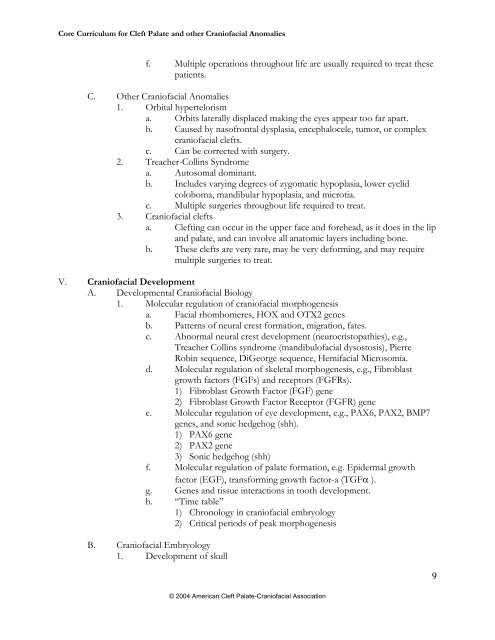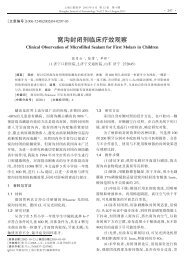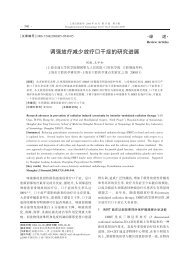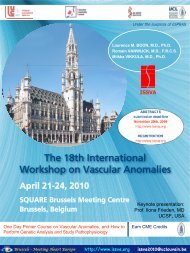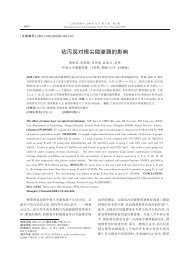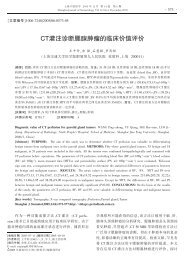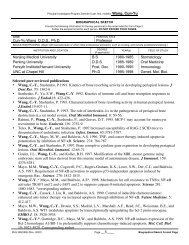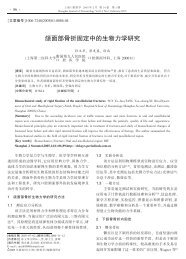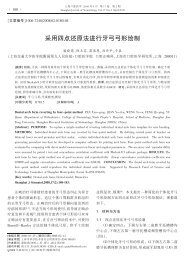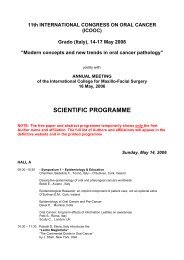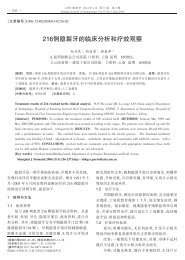core curriculum cleft lip/palate craniofacial anomalies
core curriculum cleft lip/palate craniofacial anomalies
core curriculum cleft lip/palate craniofacial anomalies
You also want an ePaper? Increase the reach of your titles
YUMPU automatically turns print PDFs into web optimized ePapers that Google loves.
Core Curriculum for Cleft Palate and other Craniofacial Anomalies<br />
f. Multiple operations throughout life are usually required to treat these<br />
patients.<br />
C. Other Craniofacial Anomalies<br />
1. Orbital hypertelorism<br />
a. Orbits laterally displaced making the eyes appear too far apart.<br />
b. Caused by nasofrontal dysplasia, encephalocele, tumor, or complex<br />
<strong>craniofacial</strong> <strong>cleft</strong>s.<br />
c. Can be corrected with surgery.<br />
2. Treacher-Collins Syndrome<br />
a. Autosomal dominant.<br />
b. Includes varying degrees of zygomatic hypoplasia, lower eyelid<br />
coloboma, mandibular hypoplasia, and microtia.<br />
c. Multiple surgeries throughout life required to treat.<br />
3. Craniofacial <strong>cleft</strong>s<br />
a. Clefting can occur in the upper face and forehead, as it does in the <strong>lip</strong><br />
and <strong>palate</strong>, and can involve all anatomic layers including bone.<br />
b. These <strong>cleft</strong>s are very rare, may be very deforming, and may require<br />
multiple surgeries to treat.<br />
V. Craniofacial Development<br />
A. Developmental Craniofacial Biology<br />
1. Molecular regulation of <strong>craniofacial</strong> morphogenesis<br />
a. Facial rhombomeres, HOX and OTX2 genes<br />
b. Patterns of neural crest formation, migration, fates.<br />
c. Abnormal neural crest development (neurocristopathies), e.g.,<br />
Treacher Collins syndrome (mandibulofacial dysostosis), Pierre<br />
Robin sequence, DiGeorge sequence, Hemifacial Microsomia.<br />
d. Molecular regulation of skeletal morphogenesis, e.g., Fibroblast<br />
growth factors (FGFs) and receptors (FGFRs).<br />
1) Fibroblast Growth Factor (FGF) gene<br />
2) Fibroblast Growth Factor Receptor (FGFR) gene<br />
e. Molecular regulation of eye development, e.g., PAX6, PAX2, BMP7<br />
genes, and sonic hedgehog (shh).<br />
1) PAX6 gene<br />
2) PAX2 gene<br />
3) Sonic hedgehog (shh)<br />
f. Molecular regulation of <strong>palate</strong> formation, e.g. Epidermal growth<br />
factor (EGF), transforming growth factor-a (TGFα ).<br />
g. Genes and tissue interactions in tooth development.<br />
h. “Time table”<br />
1) Chronology in <strong>craniofacial</strong> embryology<br />
2) Critical periods of peak morphogenesis<br />
B. Craniofacial Embryology<br />
1. Development of skull<br />
9<br />
© 2004 American Cleft Palate-Craniofacial Association


